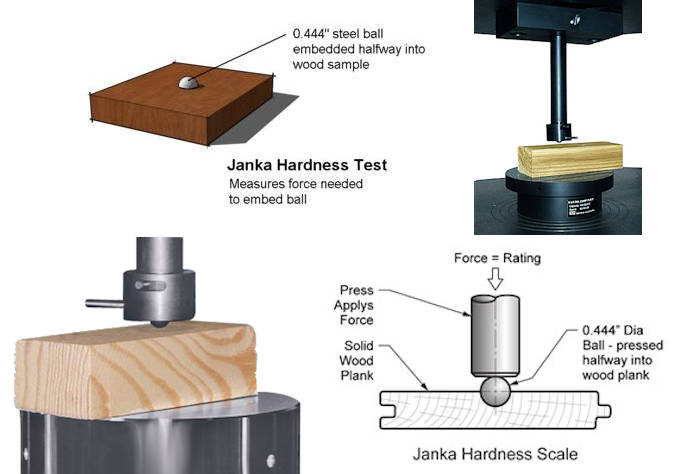
| 80 | balsa wood |
| 300 => 400 | soft cedars and pines, paulownia, some poplars and cottonwoods easily dented with a fingernail |
| 1100 => 1300 | various oaks |
| ~2000 | mesquite, purpleheart, hickory |
| ~3000 | various ebonies |
| 4500 | lignum vitae - you can drive nails with this stuff ! |
| ~5000 | Australian bull oak |
